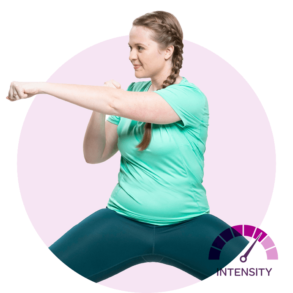Say Goodbye to Stress
For many people, simply hearing or seeing the word ‘stress’ can conjure up a swell of thoughts, feelings, and even physical responses. Although it is a term most everyone knows, interestingly the word ‘stress’ in and of itself can be defined in a number of different ways. Generally speaking, stress is the reaction of the mind and the body to the various experiences and events of everyday life. Stressors—the events or stimulus which trigger a stress response—can be physical, emotional, or psychological in nature. This can range from external stressors, like financial constraints, household commitments, and professional demands, to self-induced internal stressors, such as beliefs, expectations, and feelings of worry and uncertainty.
According to findings presented in the American Psychological Association’s most recent Stress in America annual report, 80% of Americans reported experiencing at least one symptom of stress over the past month. These included feelings of anxiousness, anger, and fatigue. Both humans and animals alike are equipped to deal with stress in the short-term, thanks to the hardwired “fight or flight” response which is helpful in the face of acute events that pose a genuine threat to our safety and survival. However, for most people living in an increasingly fast-paced world, the “fight or flight” response is regularly and inappropriately triggered as result of every day thinking and activities, ranging from the overwhelm of growing email inboxes, to the discomfort of dealing with heavy traffic during daily commutes. The chronic stress that results has been shown to contribute to the development and exacerbation of a number of physical and mental health conditions, including, but not limited to, cardiovascular disease, depression, and even certain types of cancer.
To help keep stress at bay, renowned cardiologist Herbert Benson discovered that individuals could elicit what he termed the relaxation response—an inducible, physiological response which mitigates the negative effects of stress. While there are many different methods to evoke the relaxation response, Benson identified that all practices seem to share two common aspects—repetition (for example: word, prayer, repetitive movement), and passive disregard of thoughts as they arise. Regular engagement in practices which elicit the relaxation response have been shown to enhance well-being and also improve a host of health issues, including hypertension, diabetes, arthritis, anxiety disorders, and irritable bowel syndrome (Sammarco, 2016).
A Brief Mindful Practice for Managing Stress
To heighten awareness and more effectively manage stress, take a few minutes every day to evoke the relaxation response by engaging in this brief mindful practice. To begin, assume a comfortable seated position and gently close your eyes. Bring awareness to your body, starting at your feet and working up to your head, taking gentle exploratory movements (try curling your toes, rolling your shoulders, moving your head and neck). Simply observe the physical sensations that arise as you do so. When the time feels right, invite the body to settle into a state of stillness, maintaining an upright seated position with both feet firmly rooted into the floor. Gently place your right hand over your chest and your left hand over your abdomen. Bring your awareness to the breath, simply noticing the sounds and sensations associated with each full inhalation and exhalation as the breath moves in and out of the body through the nose. This may include feeling the sensations of the belly pressing into the left hand as the lungs fill up with each inhalation, and noticing the belly relaxing as the lungs deflate with each exhalation. You may find it helpful to visualizing the breath as it journeys in and out of the body. Choose a word, phrase, or prayer that resonates with you, and with each subsequent exhalation silently repeat the word, phrase or prayer in your mind. Examples of words that can be used include “love” and “peace.” Continue this process for several minutes, or however long time will permit. As other thoughts arise during this time, simply acknowledge them and note that you will attend to them later. When ready, re-emerge from the experience by slowly releasing the word, phase, or prayer, and allow your thoughts to gradually return. Gently open your eyes and sit for a few brief moments in silence before transitioning into the rest of your day.
Stress management strategies, such as this mindful practice, can help to decrease heart rate, blood pressure and muscle tension, effectively countering the acute physiological effects of stress. Long-term, regular elicitation of the relaxation response can cultivate mindfulness and increase resilience, allowing for more effective responses to challenges as they arise in the future.
References
Sammarco, A. (2016). Women’s Health Issues Across the Life Cycle: A Quality of Life Perspective. Burlington: Jones & Bartlett Publishers.
To find out more about how you can informed lifestyle and health choices, visit our blog under the ‘Live ‘ category! You can also learn more about how the ‘Curves Circuit‘ can benefit your lifestyle here.








